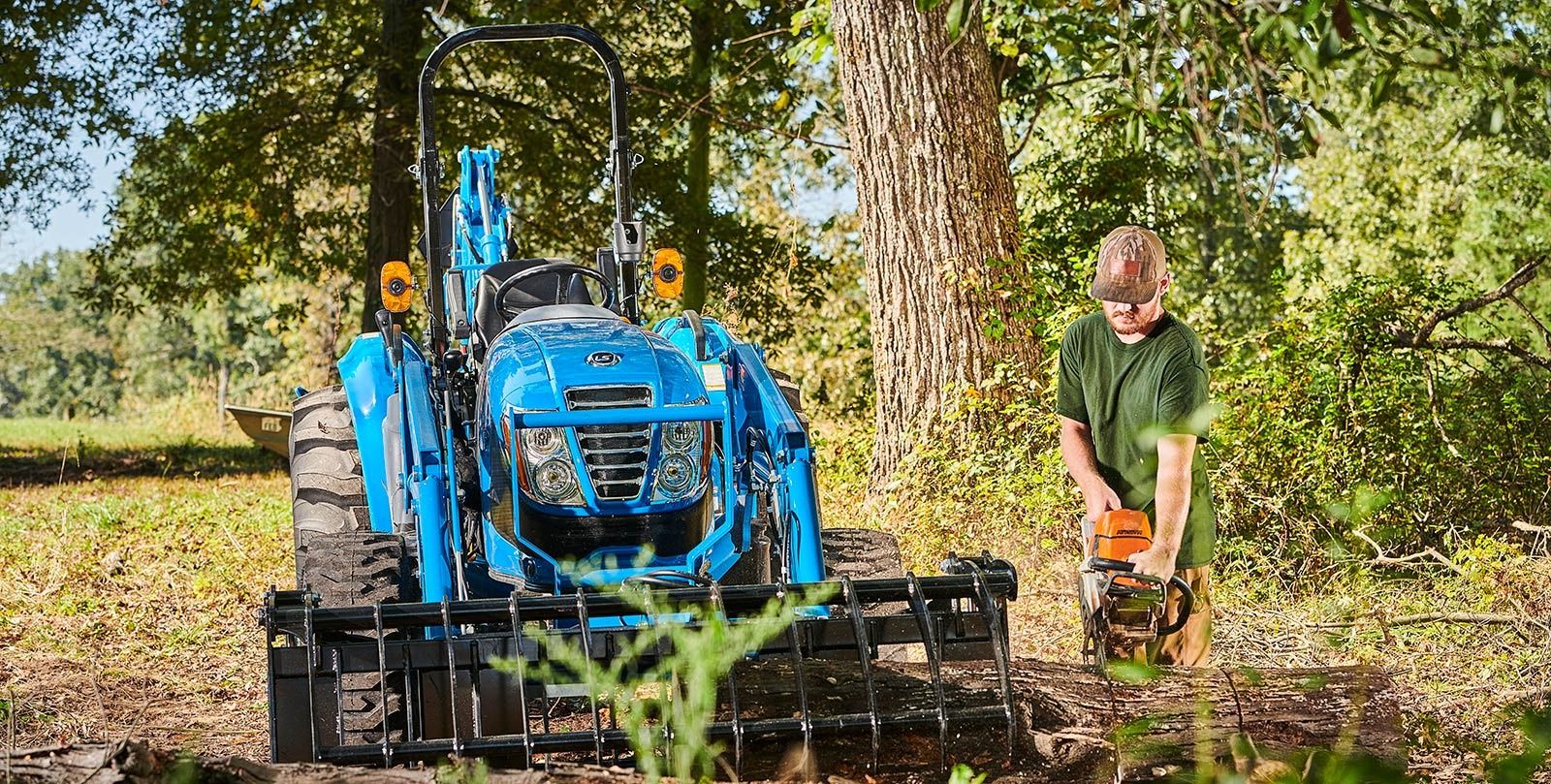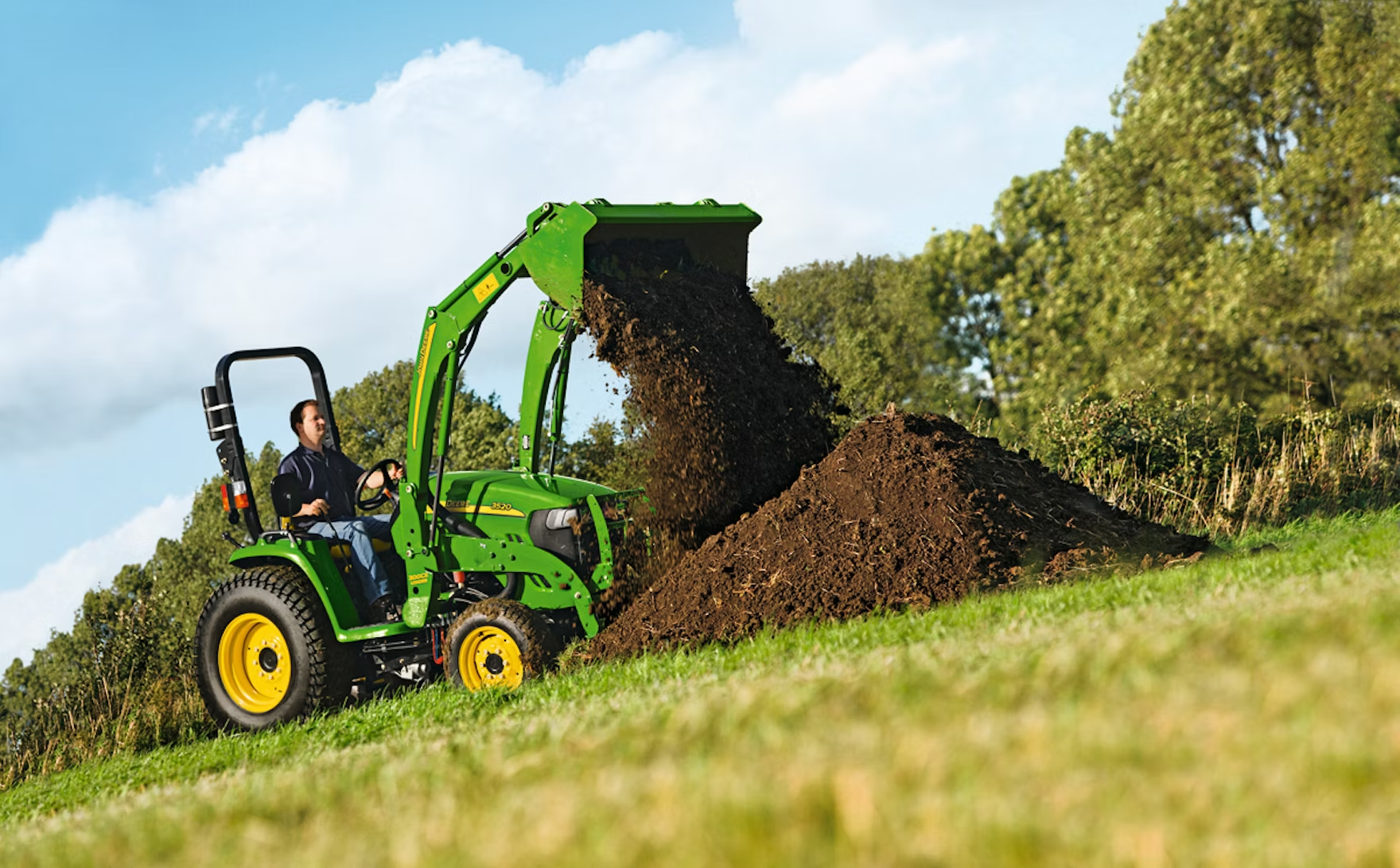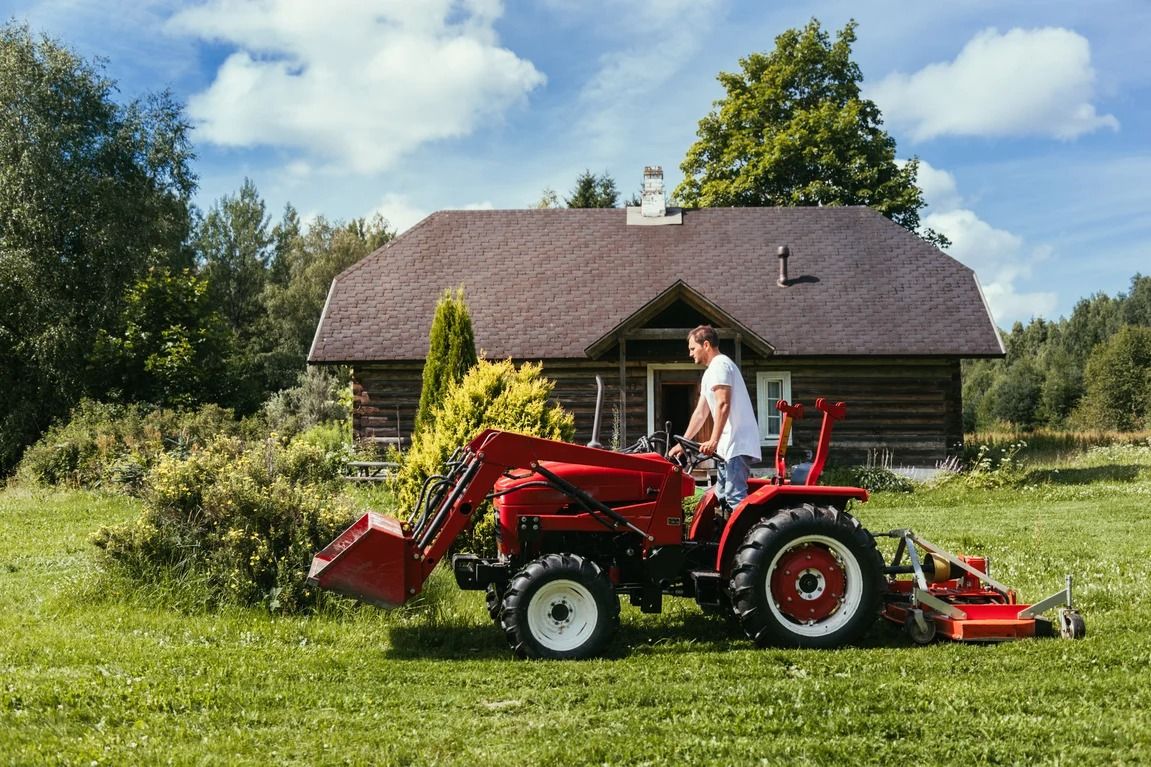Mower Maintenance Guide – Keep Your Equipment Running Strong
If you're relying on your mower to power through dense grass, brush, or large tracts of land — then proper maintenance isn’t optional. It’s essential.
Why? Because neglect leads to downtime, costly repairs, and uneven performance when you need power the most.
A well-maintained mower lasts up to 2x longer and runs 25% more efficiently.
This guide gives you a complete overview of how to care for your mower:
- Daily visual checks and grease points
- Weekly and seasonal blade, oil, and filter maintenance
- Storage and troubleshooting tips to prevent major breakdowns
Whether you're managing commercial mowing operations or just want to protect your equipment investment — this guide is built for you.
Shop Equipment AccessoriesWhy Mower Maintenance Matters
Regular mower maintenance isn't just about keeping your machine running — it's about protecting your investment, your crew, and your productivity.
Longer Equipment Lifespan & Higher Resale Value
Just like a vehicle, a well-maintained mower holds its value. Machines with consistent service records not only last longer but can also fetch higher resale prices. Preventing early wear on the engine, deck, and drive system helps you get the most out of your equipment — whether you plan to run it for five years or sell it next season.
Better Fuel Efficiency & Performance
Dull blades, clogged air filters, and low-quality oil can strain your mower’s engine. That means more fuel consumption, more noise, and less clean cutting. Routine care — especially for commercial or heavy-use machines — keeps your mower running smooth and responsive, with fewer stalls and more power to cut through thick material.
Improved Safety & Operator Control
Poorly maintained mowers are harder to steer, vibrate excessively, and create safety risks — from unbalanced decks to sudden engine stalls. Clean, greased parts and sharp blades reduce operator fatigue and prevent accidents on uneven terrain or long shifts.
Daily & Weekly Maintenance Tasks
Keeping your mower in top condition doesn’t take long — but it does take consistency. A few minutes before and after each use can prevent expensive breakdowns and extend the working life of your machine.
Before Every Use
Visual Inspection
Do a walkaround before firing up the engine. Check:
- Tires – Look for punctures, uneven wear, or low pressure
- Blades – Ensure they’re tight, clean, and not cracked
- Fuel system – Confirm no leaks or cracked fuel lines
Check Air Filter & Belt Tension
- Remove the air filter and tap it gently; replace if clogged
- Look at drive belts — they should feel snug with no visible fraying
Lubricate Grease Points
- Use a grease gun on all manufacturer-recommended fittings (spindles, wheel bearings, etc.)
- If your model has zeros or ports, apply Litho HT high-temp grease or similar
[Insert image or diagram of grease locations]
After Every Use
Clean Deck and Undercarriage
- Use compressed air or a scraper to remove clumps of grass, mud, and debris
- Prevents corrosion and keeps belts from slipping
Inspect Blade Condition
- Look for dents, chips, or bends — dull blades can tear grass instead of cutting
- If the blade is damaged, replace it before the next use
Log Engine Hours
- For commercial mowers, log usage time after every session
- Helps stay on track with oil changes and major service intervals
Pro Tip: Keeping a rag and mini tool kit onboard lets operators handle quick fixes on-site without waiting.
Browse Replacement Blades & PartsMonthly and Seasonal Maintenance
Beyond your daily checks, setting aside time each month (and at the end of the season) for deeper service helps prevent wear-related failures and keeps your mower running at peak efficiency.
Oil & Filter Changes
Changing oil regularly is critical — especially in high-hour or dusty environments.
| Engine Type | Change Interval |
|---|---|
| Gas Push Mower | Every 25–50 hours or monthly |
| Commercial Zero-Turn | Every 50–100 hours |
| Diesel Mower | Every 100–150 hours |
Always change the oil filter when replacing oilUse manufacturer-recommended engine oil grade (e.g., SAE 30 or 10W-30)
Blade Sharpening or Replacement
- Sharpen blades every 20–25 hours of use (or weekly for contractors)
- Replace blades when chipped, bent, or worn below the safe cutting edge
- Use a blade balancer to prevent vibration after sharpening
Order Replacement Blades
Inspect Belts & Adjust Tension
- Look for glazing, cracks, or frayed edges on deck and drive belts
- Reset tension or replace belts every 50–100 hours
- Check belt alignment with pulleys and make minor adjustments if needed
Flush Fuel System (End of Season)
- Add fuel stabilizer and run engine dry if storing for winter
- Clean or replace the fuel filter
- Drain old fuel from the tank and carburetor to prevent gum buildup
Pro Tip: Use a maintenance logbook or QR-coded service tag to track intervals and simplify equipment check-ins across teams.
Need Professional Service?
Common Problems and Quick Fixes
Even with regular maintenance, mowers face wear and tear. Here are the most common issues contractors run into — and how to fix them before they become bigger problems.
Uneven Cuts
Likely Cause
- Dull or damaged blades
- Uneven tire pressure
- Deck not level side-to-side
Quick Fix
- Sharpen or replace mower blades
- Check tire PSI and adjust
Level the mower deck using adjustment knobs or bolts
Engine Surging
Likely Cause
- Dirty air filter
- Clogged fuel filter or bad fuel
- Carburetor needs cleaning
Quick Fix
- Replace or clean air filter
- Drain old fuel and flush lines
- Add fuel treatment or clean carb jets
Vibration During Operation
Likely Cause
- Loose bolts or fasteners
- Worn-out spindles or bearings
- Unbalanced blades
Quick Fix
- Tighten all deck and engine bolts
- Inspect spindle bearings for play or noise
- Balance blades or replace if bent
Deck Shaking or Bouncing
Likely Cause
- Bent blade
- Debris stuck in the pulleys
- Worn blade spindle
Quick Fix
- Remove and inspect blades for bends or chips
- Clean all deck pulley areas
- Replace damaged spindles if needed
Pro Tip: Keep a basic toolkit onboard so your crew can tighten bolts, swap blades, or clear debris without a full stop.
Need Help Sourcing Parts?
Storage Tips for Off-Season
Proper off-season storage keeps your mower protected from rust, fuel breakdown, and electrical damage — so it’s ready to go next season without unexpected repairs.
Add Fuel Stabilizer and Run the Engine Dry
- Mix in a fuel stabilizer with fresh gas before your last few uses
- Run the mower until it stalls — this clears old fuel from the carburetor
- Prevents varnish buildup and hard starting after storage
Jack Up or Block the Mower
- Lift the mower slightly or place blocks under the chassis
- This prevents tire flat spots and moisture from seeping up into the frame
- For zero-turn mowers, also relieve tension from the drive system
Protect Electrical Components
- Remove the battery and store it in a warm, dry place
- Cover exposed terminals with dielectric grease to prevent corrosion
- Wrap connectors in a plastic bag or moisture-resistant pouch
Store in a Covered, Ventilated Space
- Avoid trapping moisture — don’t wrap the entire mower in plastic
- A breathable cover or tarp under a carport or in a garage is ideal
- Sweep under and around the mower monthly to prevent rodent nesting
Pro Tip: Tag your mower with a reminder card listing next maintenance steps (oil change, blade sharpening, etc.) so you’re ready when the season starts.
Need Parts or Oil Before Winter?
When to Call a Professional
Some issues go beyond simple maintenance and require certified service. Ignoring these can lead to major failures, higher repair bills, or unsafe operation.
Hydraulic Leaks or Pump Noise
If you notice fluid puddles, whine from hydraulic lines, or jerky movement in steering or lift systems, your mower’s hydraulic system may be failing. These components require pressure testing and seal replacement — best handled by a technician.
Persistent Belt or Pulley Problems
If belts keep slipping, breaking, or jumping off pulleys even after replacement:
- The tensioning system may be misaligned
- Bearings or pulleys might be warped or worn
- Deck components may need professional realignment
Electronic or Diagnostic Issues
- Blinking dash lights
- Faulty safety switches
- Error codes on digital displays
These signs point to wiring issues, failed sensors, or controller problems. Modern mowers use complex electronic systems — don’t risk damage with guesswork.
Ready for a Tune-Up or Full Repair?
Let our certified team inspect, service, or rebuild your mower the right way.
Schedule Service or Repair
Recommended Tools and Products
Having the right tools on hand makes mower maintenance faster, safer, and more consistent — whether you're servicing one mower or managing a full fleet.
Grease Gun & High-Temp Grease
- A basic manual or battery-powered grease gun is essential for daily and weekly lubrication
- Use high-temperature lithium grease (e.g., LM 50 Litho HT) for deck spindles, wheel bearings, and pivot points
Cleaning Tools
- Stiff bristle brush for removing built-up debris
- Air compressor or leaf blower to clear dust and clippings from under the deck
- Scraper for hardened grass near the pulleys and blade housing
Blade Balancer
- A $10 tool that saves your spindle and deck from vibration
- After sharpening, always balance your blade before reinstallation to prevent wobble and uneven wear
Mower Lift Jack
- Makes deck access safer and easier for cleaning, blade swaps, or belt replacement
- Choose a model rated for your mower’s weight and with wheel chocks for added safety
Pro Tip: Keep these tools in a dedicated maintenance bin or toolbox — label them by task for fast grab-and-go upkeep.
Browse Our Parts & Maintenance AccessoriesDownloadable Maintenance Checklist
Want a simple way to track what needs to be done — and when? Our free mower maintenance checklist helps you stay on schedule with daily, weekly, and seasonal tasks across your entire fleet or property.
What’s Inside
- Daily, Weekly & Seasonal Task Lists Includes everything from pre-use inspections to end-of-season storage steps.
- Maintenance Log Columns Track hours, date of service, notes, and who performed the maintenance.
Quick Reference Torque Specs Standard values for blade bolts, wheel lugs, and deck hardware — so you don’t have to guess.
Make Maintenance a Habit, Not a Headache
A few minutes of care today can save you hours of downtime tomorrow.
From checking your oil to sharpening blades and storing your mower correctly in the off-season, building a simple maintenance routine helps you:
- Extend the life of your equipment
- Maintain a cleaner, more professional cut
- Keep operators safer and more productive
- Reduce costly surprises during peak season
Whether you're managing a single mower or an entire fleet, small habits add up to big savings.




